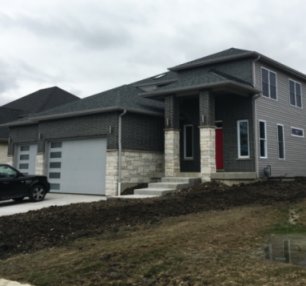
By: Maria Girlie Pascual
I have just gone through a harrowing appraisal of a home sale where I represented the buyers in the transaction, and the value given by the appraiser was $27,000 less than the contract price. Since new construction was scarce in that area, the bottom line figure did not justify what was agreed upon, but the buyers were committed to the house and therefore came up with the amount that was not financed by the bank. The good news is, the builder was scheduled to build more similar homes adjacent to that area and would pull up the price considerably when these new homes are sold. Besides, the modern property was a real show piece and the buyers were relieved to get their dream home when we closed, and that for me, was the happy ending in this scenario.
With interest rates on the rise, and a sellers’ market fueling a very active Spring environment for real estate sales, I decided to find out why the appraiser refused to amend the original value he came up with, even when the listing agent was able to submit additional information that supported a higher price for the home in question. I went to our company sponsored Appraisal Workshop to learn more about this very crucial element of the home buying and selling process so that I may be a better source of information for my clients.
To start, single family attached or detached dwellings are rated based on the location, the most important part of the formula, the condition of the property, and the demand for such dwellings in that area, or the ongoing market trend as the appraiser put it. Factor in 6 types of “Condition Rating” meaning, from brand new, unoccupied properties or new construction, (C1), to recently rehabbed with “No deferred maintenance, No repairs needed” (C2), to a well-maintained, property well-cared for home (C3), to one with “Some minor deferred maintenance” required (C4), or “Obvious deferred maintenance needed” (C5) to uninhabitable or condemned, usually abandoned or foreclosed damaged properties, (C6) that rehabbing investors pay cash for pennies on the dollar since no bank will give you financing on a C6.
Add another appraisal section of the Quality Rating of a dwelling from Q1 to Q6, where custom homes and “quality builds” fall under the “Q1” category–think Carrara versus Calacatta marble both from Italy, steps above granite or quartz, indoor heated pools with spas, tennis courts, more artisanal touches to the home, a unique location like a mansion on the lake in Lake Forest, the 9th hole of the private golf course of Sauganash Country Club, the historical mansions on the Gold Coast of downtown Chicago, or Michael Jordan’s former residence in Highland Park, and in between, the “Q2’s”, the high- quality semi-custom homes in South Barrington and Inverness, or the condo units at Lake Point Tower overlooking Navy Pier and Lake Michigan.
There are homes that fall under the “Above Standard Quality” Q3 homes built by popular builders in the expensive locales that give you the standard granite kitchen countertops and the hardwood floors, Master bath suites, upgraded flooring and cabinets, the Q4 homes with “Adequate Quality” features like the well-maintained average quality two flats of Norwood or Jefferson Park, the Q5 “Economy, Minimal, Inexpensive Quality “ homes of Hanover Park, Round Lake, Matteson, and the opposite end of the spectrum Q6 rating of “Basic, Lower cost, Simple quality”, the salt shaker homes of Country Club Hills and Cullom, Illinois.
The appraiser has a set of parameters mandated by the Federal Housing guidelines and three areas of consideration are critical to any appraisal report. These are the median value of the subject property, meaning the low and the high sales for similar homes in the area, days on the market where the fact that it had sold fast or is languishing with no offers, play a significant role in the value, and the days of supply, where how fast homes are bought and sold can affect how much it is worth on paper.
It is then up to the listing broker to help supply information to the appraiser especially since the listing realtor is supposed to be the expert in the neighborhood and can provide additional information that may factor into the final value of the subject property. School district ratings, private sales that never made it to the Multiple Listing Service (MLS), or personal knowledge about the homes that have sold are all insights that can help. These are shared information that can affect the outcome of an appraisal. Note that appraisers may not be influenced by the realtor, only by the data that has been provided as a supplement, which may or may not be used by the appraiser as a comparable in his report.
As far as the list of upgrades and remodeling returns on the sellers’ investment, the appraiser says that there simply is no “Magic List” of values because different factors play into the report—lot size, living area size, room additions, above or below grade dwellings, number of rooms, bedrooms and baths, amenities, and the general neighborhood.
Still, based on the condition and quality rating I discussed in the beginning, remodeling or rehabbing a property will always yield a return on the expense, as long as it is done properly and is not customized only to the taste of the homeowner or seller. A painted mural, mosaic walls, religious or Byzantine statues, even an in-ground pool may all be expensive to own or build, but to a future buyer, this may represent more work to remove a personal stamp paid for by the seller for his or her own enjoyment.
Appraisers do not report their valuations to the taxing bodies. These reports are strictly used for determining values for the bank loans, never for tax purposes. Adding more square footage, bedrooms, baths, play a huge factor in raising property taxes, which explains why a lot of home improvements go unreported without city or village permits to keep the owners’ taxes low.
A key fact to remember is that market value is what goes on the contract as the purchase or sale price. What goes on the report is the appraised value based on the appraiser’s OPINION of the price on the contract. If the two do not match, then it is up to the listing broker to defend the sale price by using six- month sold comparable homes no more than one-and-a-half miles from the subject property, three miles max, and usually within the same school district. If the property is unique and no sales have been reported for years, a custom or historical home, for example, then the appraiser must go beyond the area to the next vicinity to find comparable properties to base their report on.
The appraisal team reiterated too that their finished reports are entered into a Fannie Mae and Freddie Mac Uniform Collateral Data Portal or UCDP by the lender to make sure that the best comparable properties were used in the report based on other appraisals that have been uploaded into the system, and are then rated accordingly with values of 1 to 5, 5 being a questionable rating and may require extra explanations from the appraiser.
The UCDP rating determines if the report is “risky”, which is a 5, or “good” and is “uniform” in comparison to other reports in the area submitted by other appraisers. The data they use for rating homes must comply with the United States Department of Housing and Urban Development (HUD) standards. This is also why appraisers are not apt to change their valuations once the appraisal is done because it means more work to review and correct the report, especially if it received a satisfactory mark in the UCDP portal.
What did I learn from the seminar? I learned that both listing and selling agent must be diligent in gathering supporting data or comparables when listing a home for sale, or submitting an offer for their buyers. A multiple offer situation must also be a part of the appraisal if the subject property has received higher offers from different buyers through their realtors.
This plays a big role in the appraised value and a copy of these offers with the names blacked out, must be submitted to the appraiser, and hopefully justify the higher than normal sale price. This will also help set the mark for an appreciation of property values in that particular neighborhood.
Still thinking about selling your home? Let me help you make that decision. I can walk with you to look at your home from a future possible appraisal standpoint and maybe help you navigate the pros and cons of remodeling just to sell, and which features might be worth paying for to get a higher sale price when you enter the home selling market.
I may not be a licensed appraiser, but I can still give you a brokers’ opinion that can help you price your home properly and make it sell faster, than if you try to price it without knowing what your home will be up against and result in a long wait for a buyer willing to pay your hopeful price (read: overpriced).
The interest rates are up from last year, but are still great in terms of becoming a homeowner again, or for the first time. Short sales only require a four-year waiting period from the time it was recorded, and previous owners affected by the real estate downturn that resulted in a short sale of their properties can now come back and purchase again, as long as their credit score is at least 640. Foreclosures take longer, but I can also help you develop a plan to eventually become a homeowner again. For first-time homebuyers, take advantage of the improving real estate market and invest in your future with your own place.
Call, email or text me anytime. I have a wealth of information to share with my 30 years of experience as a real estate broker in the Chicago market. Again, I am here to help you achieve your goals and have built a loyal base of clients that are now two generations strong.

Soon-to-be newlyweds and new homeowners Mike Cuenca and Yvonne Wong celebrate after closing– more blessings to you both!

The dream came true- congratulations to Michael Cuenca and the future June bride Yvonne Wong.
 VIA Times – April 2017 Issue Vital News, Vibrant VIews for Asian Americans in Chicago & Midwest
VIA Times – April 2017 Issue Vital News, Vibrant VIews for Asian Americans in Chicago & Midwest

